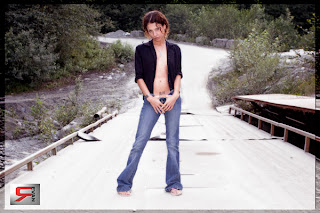
On Dec. 15, 2006, an intense windstorm swept through the jewel of Vancouver, Stanley Park. The storm knocked down over ten thousand trees and left the park in utter disrepair. But why?
Trees can live a long time; they boast being some of the oldest living organisms on the planet. Trees stand patiently through colonization and all sorts of weather conditions. The fact that thousands of trees fell because of one storm should speak to the public in more ways than one: If trees that have lived through many past storms are now falling during one night, the cause must be epic—or us.
Global warming has been touted as one cause of ever-increasing storm-strength. And the storm on that night in December was particularly ruthless, throwing 120 km winds at Vancouver. So, if the storm was caused by climate change, then we have ourselves to blame. But is that the only reason why this park was destroyed?
In 2004, the Stanley Park Ecology Society (SPEC) and the Vancouver Park Board started an environmental initiative called Ivy Busters. They realized the park had been inundated with English ivy, a plant not native to North America.
Alien or introduced species of plants are much more common than people realize, and many gardeners cultivate and contribute to the problem in their own backyards. Invasive plants, like ivy, replace the natural vegetation of a forest, which can have major negative impact on the ecosystem: Yet another problem humans can blame themselves for.
SPEC states on its website that English ivy also “can prevent the regeneration of understory trees and shrubs, and as it climbs trees, the weight of ivy will increase the likelihood of blow-down.”
There is still a significant ivy problem in Stanley Park, and obviously there is a correlation between trees falling and ivy growth. So why is replanting going forward before the ivy problem is dealt with? Not only could this happen again during a storm, but the young, replanted trees will be hindered by the copious masses of ivy along the forest floor.
Eventually all trees will fall, whether from wind or saws, but it is becoming apparent that ivy plays a significant role in destroying our British Columbian woods. The forest along the shores of the Coquitam River is an excellent example of the wreckage caused by these green invaders. The foreign ivy is weakening our native land, and it needs to be dealt with.
There are a few local groups devoted to stopping alien plants from taking over, including the Coastal Invasive Plant Committee (CIPC) and the Incasive Plant Council of B.C. (IPCBC).
Next month, the replanting of Stanley Park will begin again in full-force. The public can only hope the Vancouver Park Board has taken battling aliens into their strategy, as well.
Trees can live a long time; they boast being some of the oldest living organisms on the planet. Trees stand patiently through colonization and all sorts of weather conditions. The fact that thousands of trees fell because of one storm should speak to the public in more ways than one: If trees that have lived through many past storms are now falling during one night, the cause must be epic—or us.
Global warming has been touted as one cause of ever-increasing storm-strength. And the storm on that night in December was particularly ruthless, throwing 120 km winds at Vancouver. So, if the storm was caused by climate change, then we have ourselves to blame. But is that the only reason why this park was destroyed?
In 2004, the Stanley Park Ecology Society (SPEC) and the Vancouver Park Board started an environmental initiative called Ivy Busters. They realized the park had been inundated with English ivy, a plant not native to North America.
Alien or introduced species of plants are much more common than people realize, and many gardeners cultivate and contribute to the problem in their own backyards. Invasive plants, like ivy, replace the natural vegetation of a forest, which can have major negative impact on the ecosystem: Yet another problem humans can blame themselves for.
SPEC states on its website that English ivy also “can prevent the regeneration of understory trees and shrubs, and as it climbs trees, the weight of ivy will increase the likelihood of blow-down.”
There is still a significant ivy problem in Stanley Park, and obviously there is a correlation between trees falling and ivy growth. So why is replanting going forward before the ivy problem is dealt with? Not only could this happen again during a storm, but the young, replanted trees will be hindered by the copious masses of ivy along the forest floor.
Eventually all trees will fall, whether from wind or saws, but it is becoming apparent that ivy plays a significant role in destroying our British Columbian woods. The forest along the shores of the Coquitam River is an excellent example of the wreckage caused by these green invaders. The foreign ivy is weakening our native land, and it needs to be dealt with.
There are a few local groups devoted to stopping alien plants from taking over, including the Coastal Invasive Plant Committee (CIPC) and the Incasive Plant Council of B.C. (IPCBC).
Next month, the replanting of Stanley Park will begin again in full-force. The public can only hope the Vancouver Park Board has taken battling aliens into their strategy, as well.


No comments:
Post a Comment